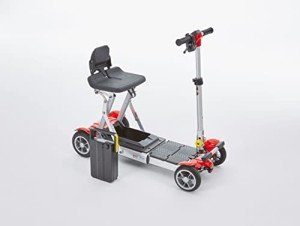The Best Place To Research Mobility Aids Online
Understanding Mobility Aids: Enhancing Independence and Quality of Life
As society continues to age and individuals significantly look for methods to keep independence, the demand for mobility aids has never ever been more significant. Mobility aids, which include a variety of devices created to assist individuals with strolling or moving around, play an essential role in promoting mobility, improving security, and enhancing overall lifestyle. This blog post will check out the various kinds of mobility aids, their advantages, factors to consider for choice, and respond to some often asked questions.
Kinds Of Mobility Aids
Numerous mobility aids are readily available, each developed to address specific needs. The following table summarizes a few of the most common kinds of mobility aids and their features.
Type of Mobility Aid
Description
Best Suited For
Key Features
Walking canes
A portable stick offering assistance and balance.
Individuals who need minimal assistance.
Light-weight, portable, adjustable height.
Walkers
Four-legged frames offering stability.
Those requiring considerable support while walking.
Foldable, some with wheels, added safety functions.
Rollators
Wheeled walkers with a seat for resting.
Individuals requiring mobility with the alternative to rest.
Brakes, baskets for individual items, adjustable height.
Wheelchairs
Chairs with wheels for individuals with restricted mobility.
Those unable to walk or requiring comprehensive support.
Manual or powered alternatives, customizable seating.
Scooters
Motorized devices for larger distances.
People with restricted endurance but requiring self-reliance.
Different sizes and styles, typically easily transportable.
Crutches
Support devices put under the arms or forearms.
People recovering from lower limb injuries.
Adjustable, lightweight, requires upper body strength.
Stairlifts
Mechanical devices for moving in between floors.
Users facing challenges in multi-level homes.
Personalized for different staircases, automated.
Advantages of Mobility Aids
Mobility aids offer a variety of benefits that can significantly enhance the lives of individuals dealing with mobility challenges. Some notable advantages include:
Increased Independence: Mobility aids empower individuals to move easily without depending on others for assistance, thereby enhancing their self-confidence and self-confidence.
Boosted Safety: Using mobility aids can reduce the danger of falls and injuries, especially for older adults or those with balance issues.
Improved Quality of Life: By facilitating mobility, individuals can take part in social activities, participate in events, and take pleasure in life more fully, contributing to better psychological and psychological health.
Rehab Support: After surgery or injury, mobility aids offer essential support and stability, helping in recovery and rehab processes.
Accessibility: Many mobility aids are designed to be used both inside and outdoors, guaranteeing that people can browse various environments with ease.
Aspects to Consider When Choosing Mobility Aids
Selecting the proper mobility help needs cautious factor to consider of a number of aspects, consisting of:
Factor
Factors to consider
User's Needs
Examine the level of mobility required; think about whether the user needs momentary or long-lasting support.
Physical Limitations
Examine the user's strength, balance, and coordination to identify the best kind of help.
Setting
Think about the main environments where the help will be used, such as home, outdoors, or particular terrains.
Weight and Portability
Make sure that the selected gadget is manageable relating to mobility and storage, specifically for outside usage.
Budget plan
Mobility aids been available in a series of rates; consider insurance protection and available financing choices.
Adjustability
Choose aids that can be changed for height and comfort to accommodate growth or altering needs.
Regularly Asked Questions About Mobility Aids
1. How do I understand if I require a mobility aid?
Many factors can signify the need for a mobility help, such as trouble strolling or balancing, tiredness while standing, or a recent surgery affecting mobility. Consulting with a health care specialist can supply assistance customized to specific needs.
2. What types of mobility aids are covered by insurance coverage?
Coverage varies between insurers, but the majority of offer choices for durable medical equipment, which normally consists of wheelchairs, walkers, and some types of walking canes. foldable scooters with your insurance coverage supplier for specific protection info.
3. Can mobility aids be utilized outdoors?
Yes, many modern-day mobility aids are designed for outdoor usage. Rollators, scooters, and some walkers are equipped with functions for stability and ease of use on various surface.
4. How do I maintain my mobility help?
Regular maintenance involves looking for any wear and tear, making sure that parts such as wheels, brakes, and frames are operating correctly, and cleaning the equipment as required. Following the maker's guidelines is essential for safety.
5. Exists a danger of ending up being depending on mobility aids?
While some users might end up being reliant on mobility aids, they are developed to promote self-reliance and mobility. Slowly utilizing a mobility help can boost self-confidence and assistance maintain physical strength and coordination.
Mobility aids are vital tools that empower people to conquer physical difficulties, promoting self-reliance and enhancing quality of life. By understanding the numerous kinds of mobility aids offered, their advantages, and important aspects for factor to consider, families and caregivers can make informed decisions that best satisfy the requirements of their loved ones. With the best assistance, those with mobility difficulties can lead satisfying and active lives, complimentary to explore the world around them.
